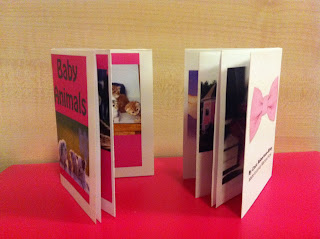What is the difference between symbols and logos?
A logo is a graphic representation of an identity. It is composed of a symbol, illustration and/or typography ('logotype')
The word logo means: Name word, symbol or trademark designed for easy recognition.
A logotype is a single piece of type bearing two or more usually separate elements. Also another name for a logo or the companies signature typeface.
A symbol is something that represents or stands for something else, usually by convention or association, especially a material object used to represent something invisible.
Symbols and logos are not the same thing because a symbol is usually picture that is representing an idea like the name of things, which is often used in pubic signage such as the image that symbolises the male toilet from the female toilet which have become explicit meanings to people. Where as a logo is like someones personal name as it has character and belongs to a company just like a name belongs to an individual. Logos are usually implicit. (Implicit means implied and explicit means when something is stated clearly and in detail)
Example: Nike, like most sports marketing companies, uses implicit advertising rather than explicit. That is, their ads do not directly sell their product, but they get the consumer to think about the product by implying a certain moment of a sports experience. Nike brings out a passion in the consumer that implicitly makes them think about Nike’s product. After exploring Nike’s website, it is easy to associate its products with the like-ability of today’s star professional athletes.
This simple logo has been grained into sport culture throughout the world by using implicit advertising
History of Logo design
The history of logos date back to the Ancient Greeks. The first representations of logos were called ciphers (safe), part of the greek manuscript. Many early greek and roman coins feature the monograms of logos of rulers or towns. The most famous of these is the sacred monogram which is formed by the joining of greek letters; Khristos which means J. Christ.
In the 13th century logo design developed from simple ciphers to trademarks for traders and merchants. The middle ages were extremely prolific in inventing ciphers for artistic and commercial use. The information age changed the face of logo and logo design.
How people identified themselves
A logo is also seen as a simple visual mark to identify a company, product or service. There are different types of signs and emblems easily recognised and associated with various purposes. For example crests are used to identify a country or family. Sometimes big enough organisations could afford to make their own crest, which could be a very detailed drawing with many objects. Then flags were used due to their larger format and because they were visible from longer distances. Another example is road signs which were designed for informational purposes (symbols). Techniques such as contrasting colours, simplified and stylish formats to identify and attract more attention and convey information.
Coat of arms is another historic origin of how people represented themselves. Coat of Arms is a unique heraldic design on a shield used to cover and protect armour and to identify who is wearing it. The design is a symbol unique to an individual person, and to his family, corporation, or state. Historically, armorial bearings were first used by feudal lords and knights in the mid-12th century on battlefields as a way to identify allied from enemy soldiers. As the uses for heraldic designs expanded, other social classes who never would march in battle began to assume arms for themselves. Initially, those closest to the lords and knights adopted arms, such as persons employed as squires that would be in common contact with the armorial devices. Then priests and other ecclesiastical dignities adopted coats of arms, usually to be used as seals and other such insignia, and then towns and cities to likewise seal and authenticate documents. Eventually by the mid-13th century, peasants, commoners and burghers were adopting heraldic devices. The widespread assumption of arms led some states to regulate heraldry within their borders. However, in most of continental Europe, citizens freely adopted armorial bearings.
What is a logo?
Logos are one of the most important elements of a business as they are going to create strong brand recognition. A strong, recognisable logo will make people think of a particular business that offers the product of service they are looking for. For example the McDonalds logo is one of the most recognised all over the world and even though the logo does not illustrate what the company sells, people are still aware what the company sells, this is due to advertising which attracts more customers and makes them aware of the company logo and build a stronger brand recognition.
A Logo is a design symbolizes a business/organization. It is a design that is used by a business/organisation for its letterhead, advertising material, and signs as an emblem, which then allow the organisation to be easily recognised. A Logotype is a graphic representation or symbol of a company name, trademark, abbreviation, etc., often uniquely designed for ready recognition.
Today companies have less time to impress their customers as everything is moving so fast and are continuing to say that 'simpler is better'. Logos today have to be designed in a very stylish way but still remaining conservative so that it is easier for the eye to catch and the brain to memorise the logo. Reproduction costs have to be considered as more detailed and colourful logo designs are harder to reproduce and they cost more money. The size also has to be considered as logos are usually featured on stationary.





























